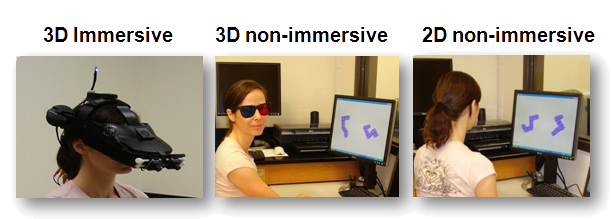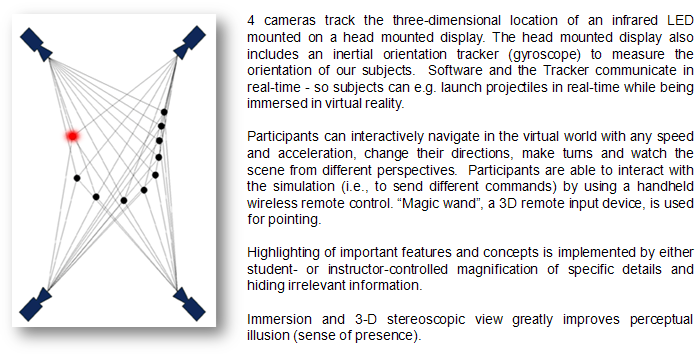Mental Imagery and Human-Computer Interaction Lab
3D Visualization in Immersive Virtual Environments
Our research on 3D visualization in immersive virtual environments includes the following directions:
- Investigating the neural and behavioral correlates of 3D visual-spatial transformations
- Training visual-spatial abilities in immersive virtual environments (IVEs)
- Using IVEs to facilitate science learning
We are interested in the contribution of immersion to spatial processing and compare subjects’ performance in non-immersive and immersive 2D vs. 3D environments. Our 3D virtual environment
provides a sensation of immersivity and allowing the participant to move freely while his/her motion is tracked, and interact with the virtual world using a specially designed actuator device.

Recently, more realistic 3D displays have been designed as new, more ecologically valid alternatives to conventional 2D visual displays. However, research has thus far provided inconsistent evidence regarding their contribution to visual-spatial image encoding and transformation. The majority of experimental studies on 3D visual-spatial processing have been conducted using traditional 2D displays. Our research suggests that immersivity is a critical feature of 3D virtual environments for facilitating visual processing and the training of visual ability.
